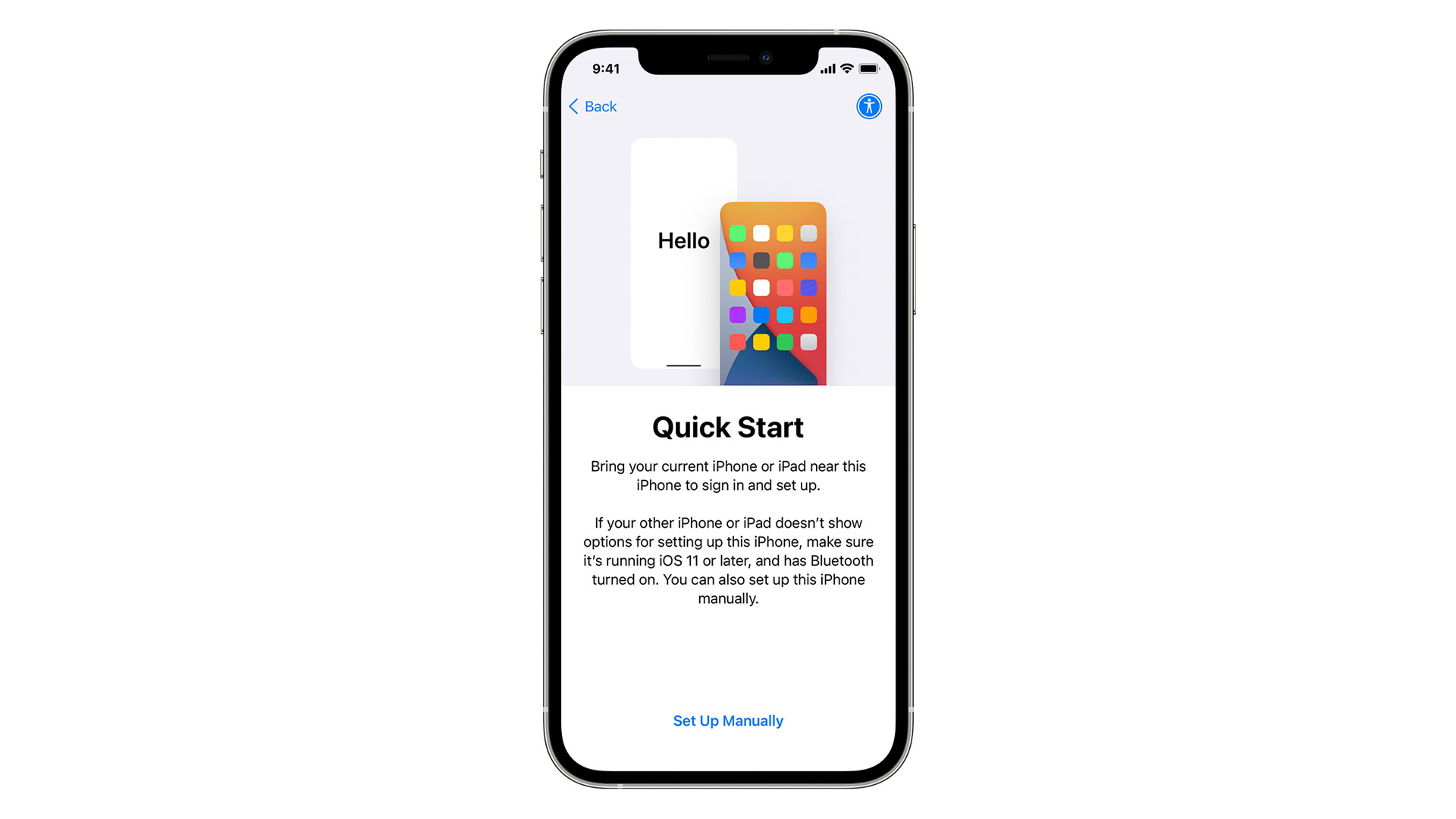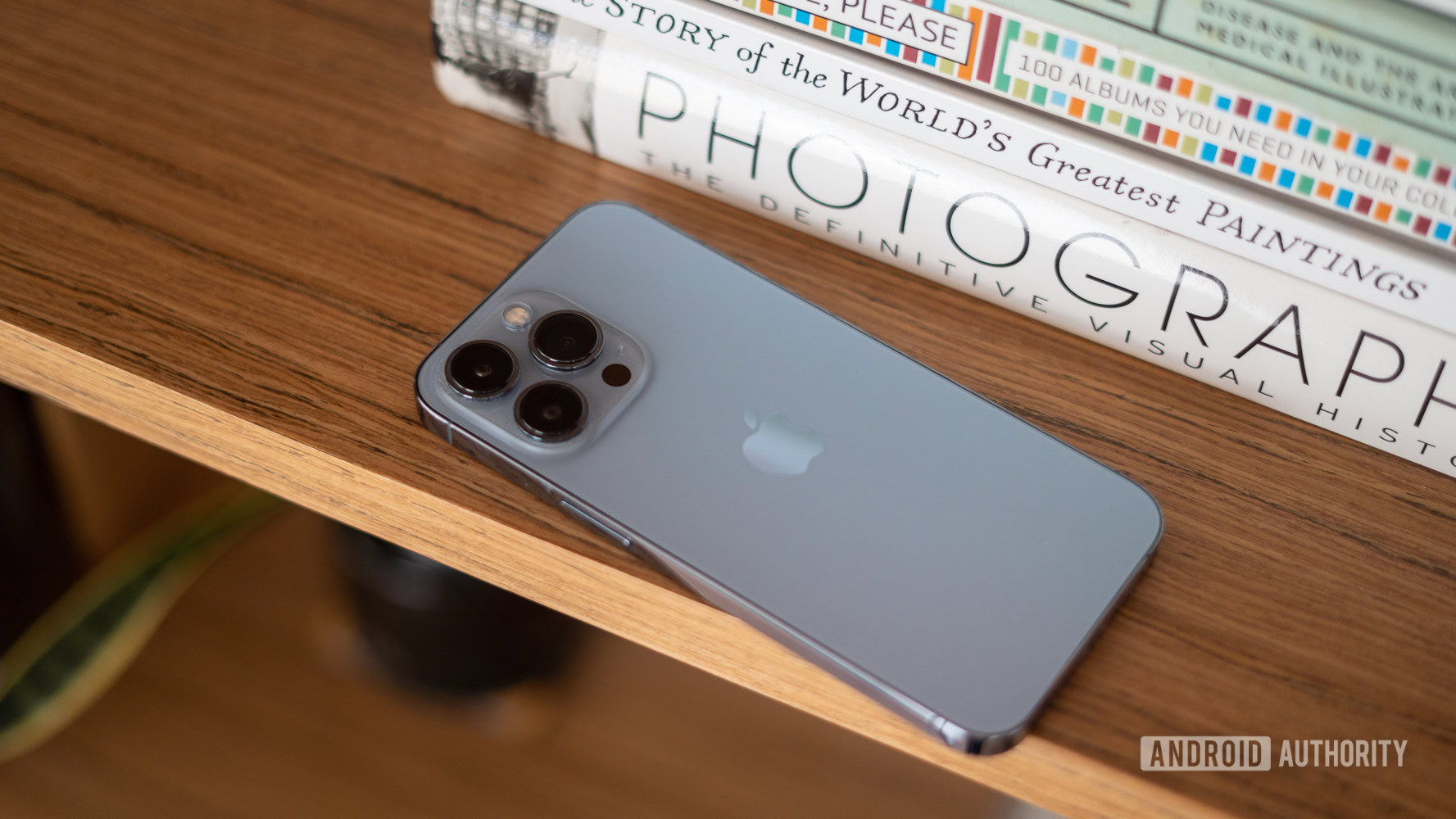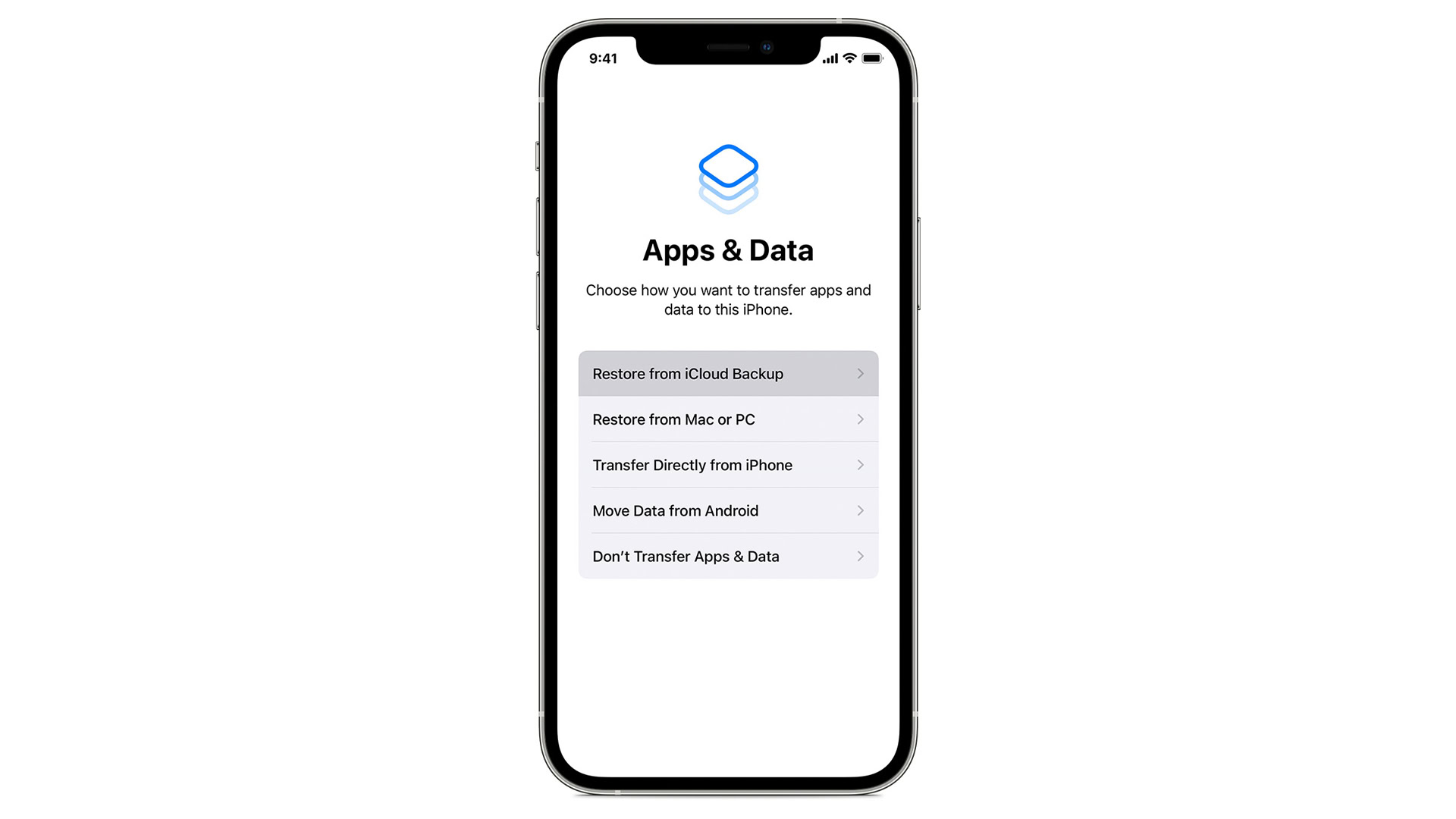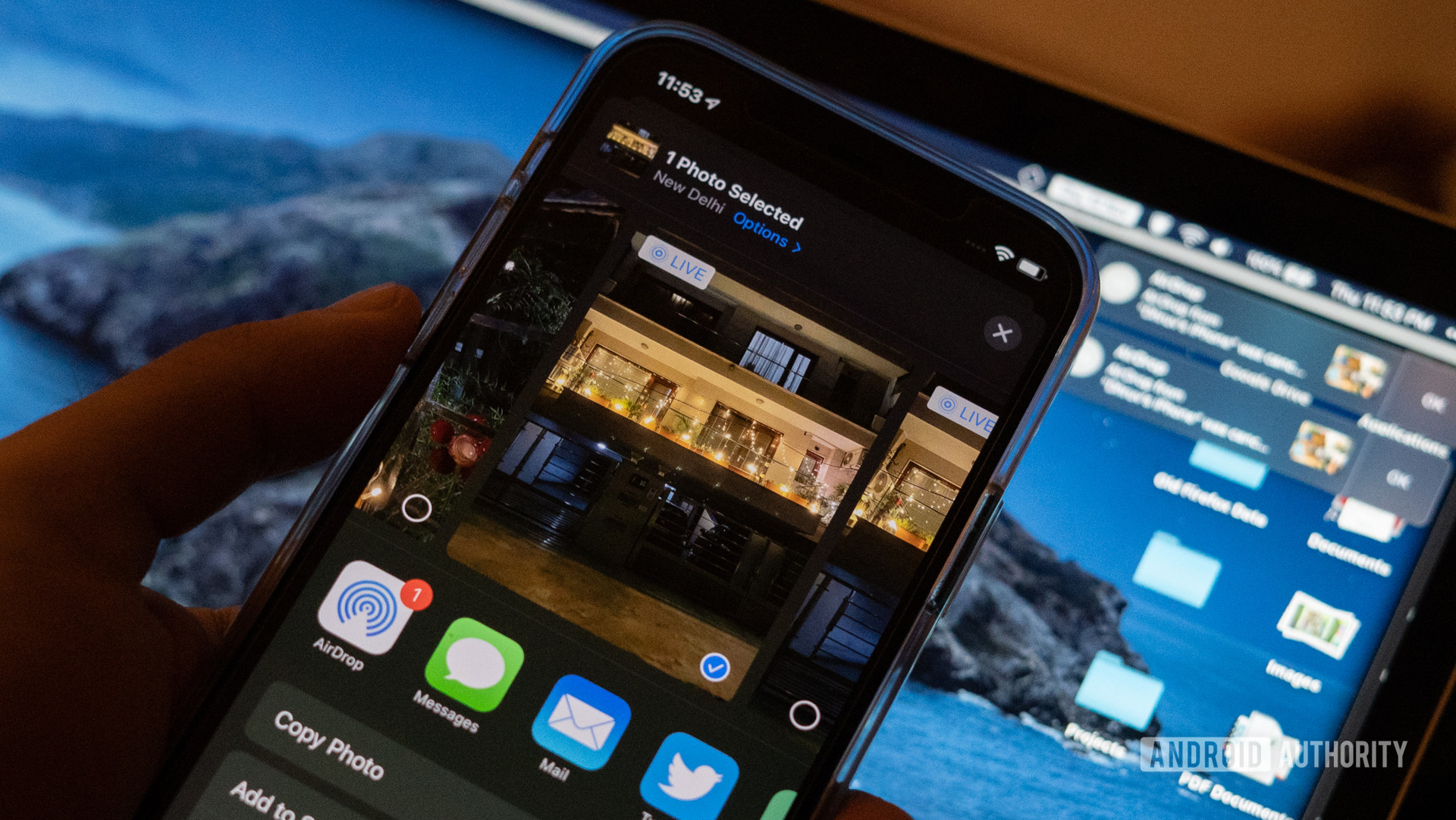Affiliate links on Android Authority may earn us a commission. Learn more.
How to transfer your data to a new iPhone
Published onAugust 24, 2022
One of the more intimidating yet tedious parts of upgrading your iPhone is ensuring critical data makes the leap. Thankfully, Apple has an interest in smoothing out the process, and offers a few native tools to help. Here’s how to transfer data to a new iPhone using three different methods.
Read more: The iPhone buying guide
QUICK ANSWER
To transfer data to a new iPhone, the ideal option is Apple's Quick Start. Turn on your new iPhone, place it next to your old one, and the latter will display an option to begin setup under your Apple ID. Make sure that both devices are plugged in, and that your old one has Bluetooth on. Be patient — the process takes at least several minutes, and the more data you have, the longer it's going to run.
JUMP TO KEY SECTIONS
How to transfer your data to a new iPhone by using Quick Start

If you’ve ever had an Apple Store upgrade your iPhone in the past few years, this is the process clerks use. It’s simple and comprehensive — absolutely everything will migrate, including apps, data, and settings. You can use this at home too, it’s just a question of knowing the option exists.
Here’s what to do:
- Plug in both iPhones and place them next to each other. Make sure your old one has Bluetooth on (the new one should have it on by default) and is running iOS 11 or later.
- You’ll see a pop-up on your old device offering the option to set up the new one under your Apple ID. Tap Continue.
- An animation will appear on your new iPhone. You’ll be asked to scan the animation using your old phone’s camera. If this doesn’t work, you can still tap Authenticate Manually and follow prompts.
- On your old iPhone, tap Finish on New iPhone.
- Enter your old phone’s passcode on the new one. Follow directions to set up Face ID or Touch ID, depending on the iPhone model. If you’re setting up Face ID, don’t wear anything unusual on your face — it’s fine if you’re wearing transparent prescription glasses, for example, but you should temporarily remove sunglasses or masks.
- When the Transfer Data from iPhone screen appears on the new iPhone, hit Continue.
- Leave both phones alone and next to each other until the transfer is complete. This can take a while — anywhere from a few minutes to nearly an hour, depending on much data you have. In fact if there are any apps or videos you can afford to delete, do so before launching Quick Start.
How to reset your phone back to Quick Start

If you’ve accidentally interrupted Quick Start on your old iPhone, or set up your new iPhone as a fresh device then decided against it, it’s still possible to restart the process.
In the case of interruption — say, because you switched apps — all you have to do is reboot your old device. On an iPhone 13, for example, you can hold down both the sleep/wake button and one of the volume buttons for a few seconds, toggle the power slider, then hold sleep/wake again for a few seconds to power back on. As long as the new and old phones are next to each other with Bluetooth active, Quick Start should reappear.
To revert your new iPhone to a Quick Start state, you’ll have to do a factory reset. Follow these steps:
- Open the Settings app.
- Tap General.
- Scroll to the bottom of the next screen and tap Transfer or Reset iPhone.
- Tap Erase All Content and Settings.
- Once the phone is wiped, you’ll be left at a setup screen, at which point you can follow the Quick Start instructions above.
How to transfer your data to a new iPhone by using iCloud

This option should be considered a fallback for Quick Start rather than an equal alternative, since it can only ever transfer purchases, data, and settings linked to your Apple ID and iCloud accounts, and the speed of the process is highly dependent on internet and/or Wi-Fi bandwidth.
Ironically perhaps, it may be preferable if time is a problem — while it takes longer than Quick Start overall, once you’re past a few key steps, you can start using your new iPhone while apps download in the background. Just don’t let the process continue on cellular if you don’t have an unlimited data plan.
To get going:
- Turn on your new iPhone, and follow onscreen setup prompts until you reach a screen titled Apps & Data.
- Tap Restore from iCloud Backup, and sign into iCloud using your Apple ID.
- Select a backup to use. Generally you should use the most recent one to preserve content, although this can be an opportunity to roll back if your old phone was experiencing problems triggered by app updates.
- You may be asked to sign into multiple Apple IDs if some content was bought under other accounts. If you can’t remember those logins, you can temporarily skip authentication by tapping Don’t have an Apple ID or forgot it.
- Complete any remaining setup prompts. Once you’re at the homescreen, you can start using your iPhone, but some apps may be unavailable until downloads complete. You may also have to trigger some content downloads manually, like Spotify or Apple Music playlists, or offline data in Google Maps.
How to transfer select data to a new iPhone by using AirDrop

We recommend against this method for a few reasons. While things like photos, videos, and documents should still be accessible via the cloud, it means configuring your new iPhone as totally virgin hardware, including settings, and having to manually download apps one-by-one.
That said, a fresh start could be what you’re looking for. Homescreens can get unnecessarily cluttered over time, and if storage was at a premium on your old device, this should clear up space.
AirDrop is Apple’s short-range filesharing technology, available on any of the company’s recent phones, tablets, and computers. Read our detailed instructions to begin using it. Once you’re familiar, all you have to do is locate essential media and documents on your old phone — probably using the Files app — then choose your new iPhone as an AirDrop target when sharing.
Read more: The things iOS does better than Android